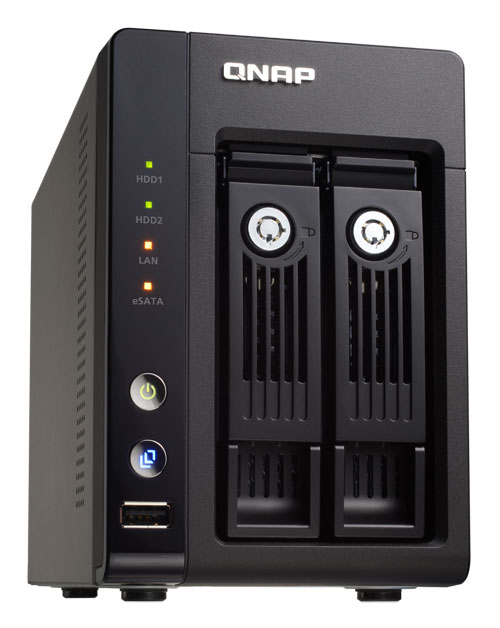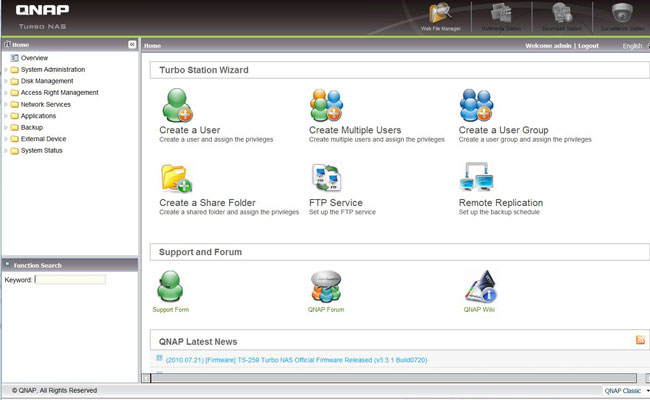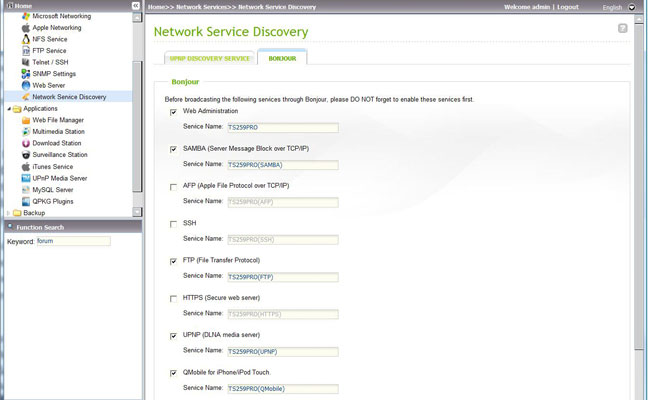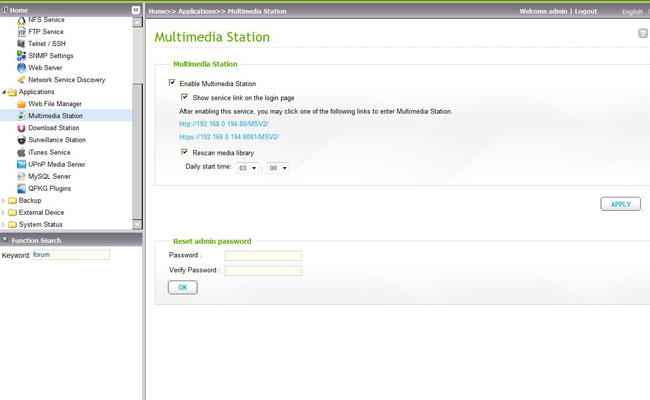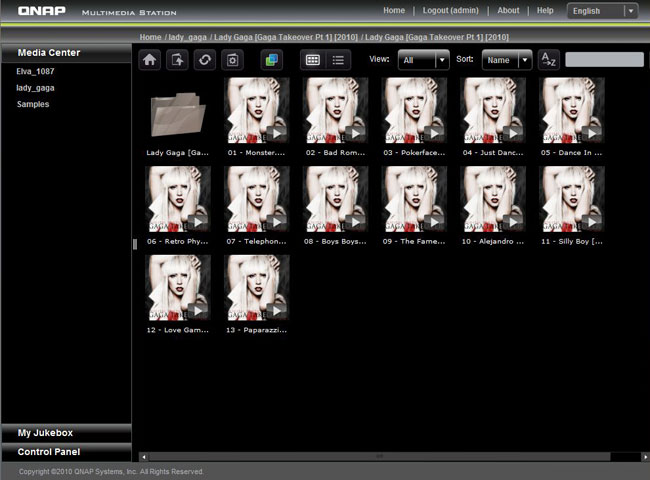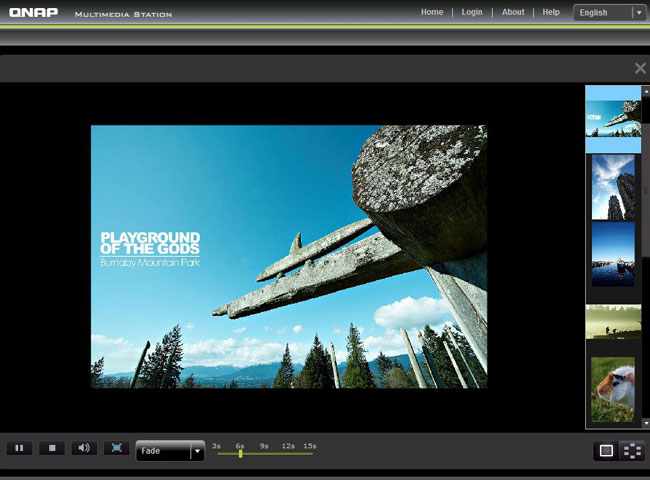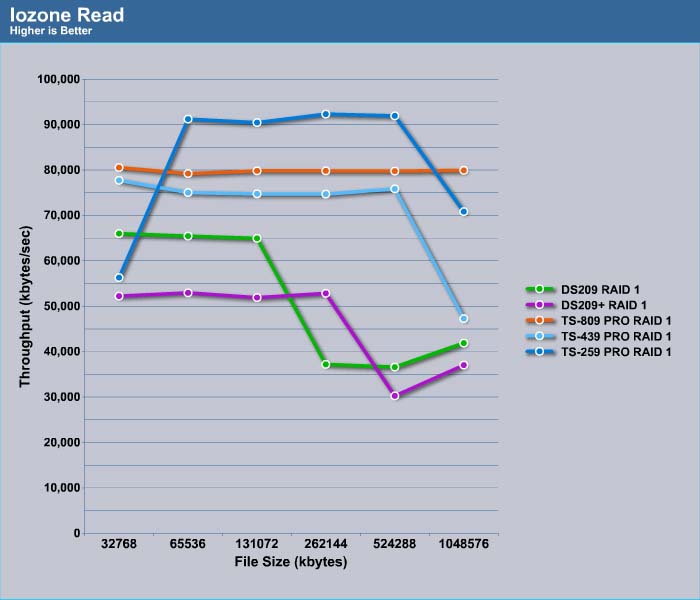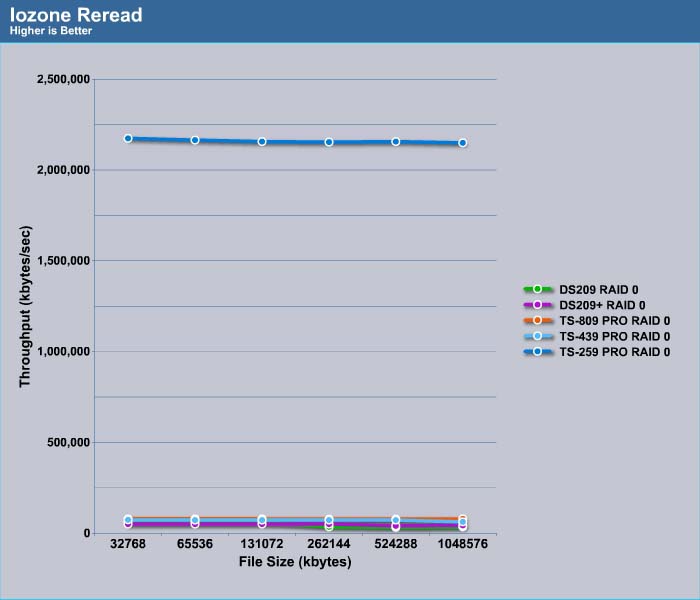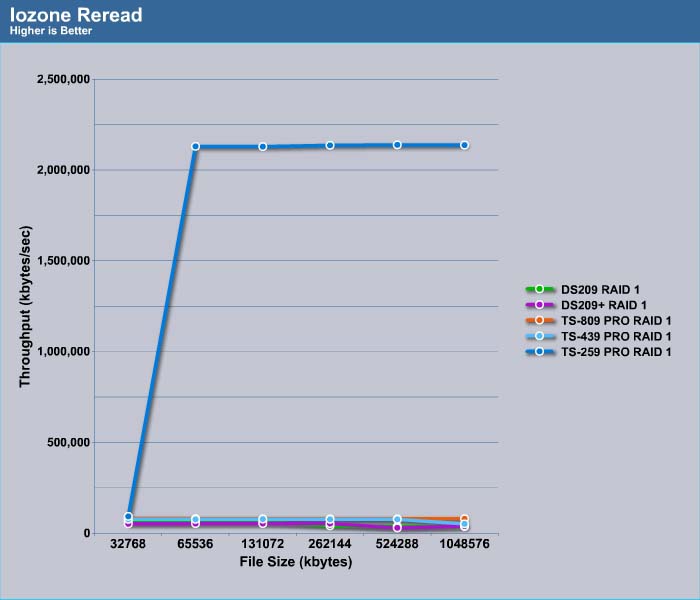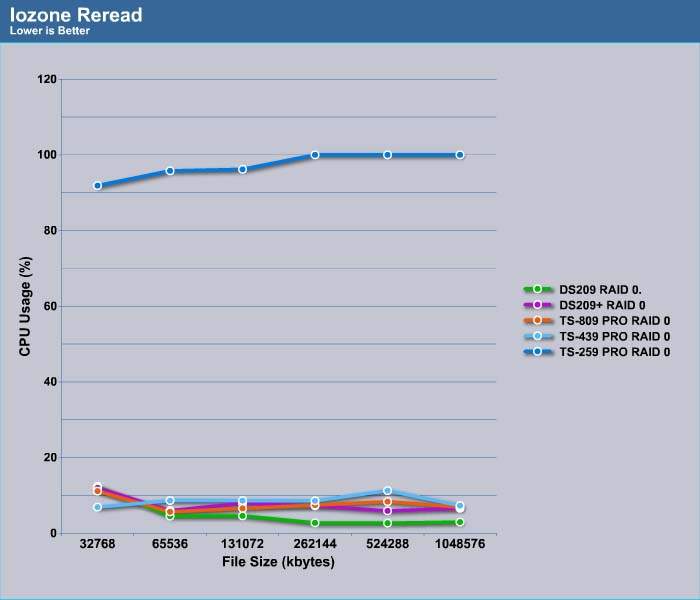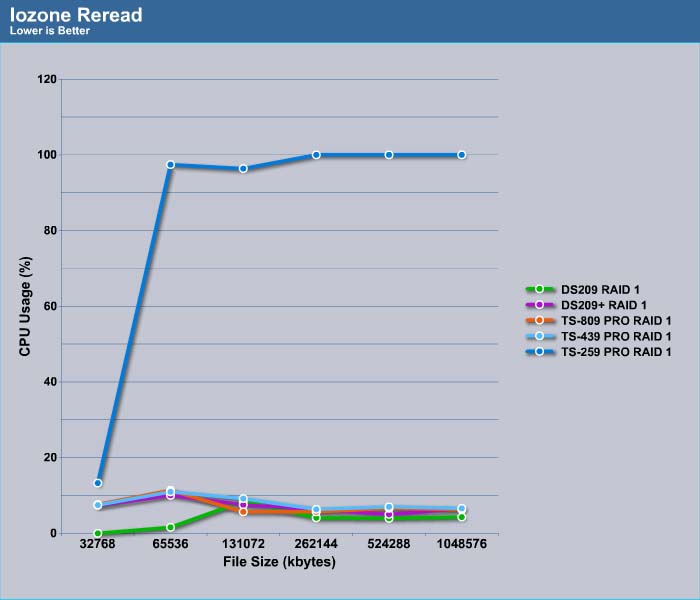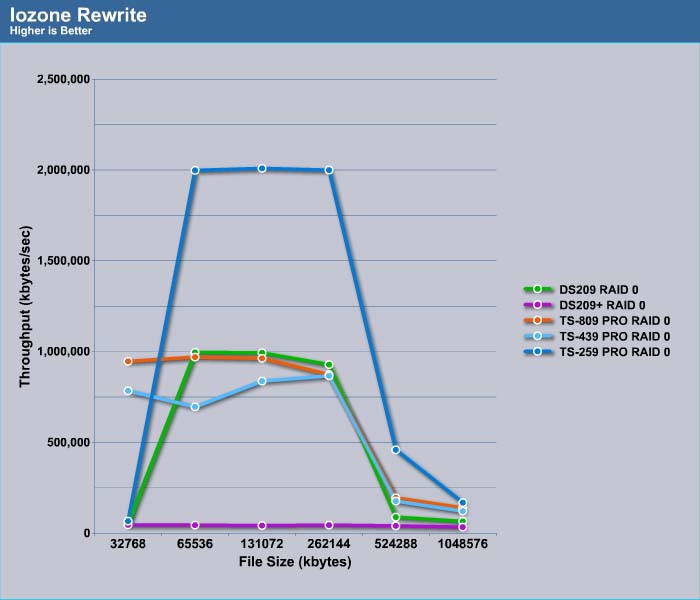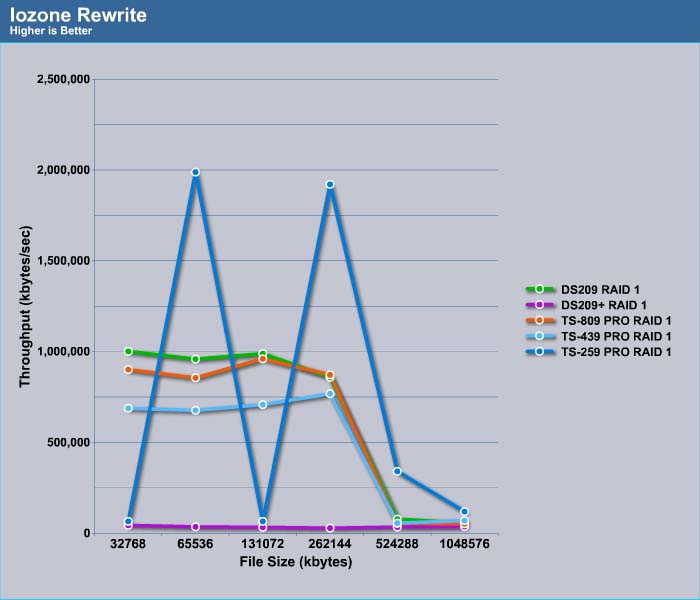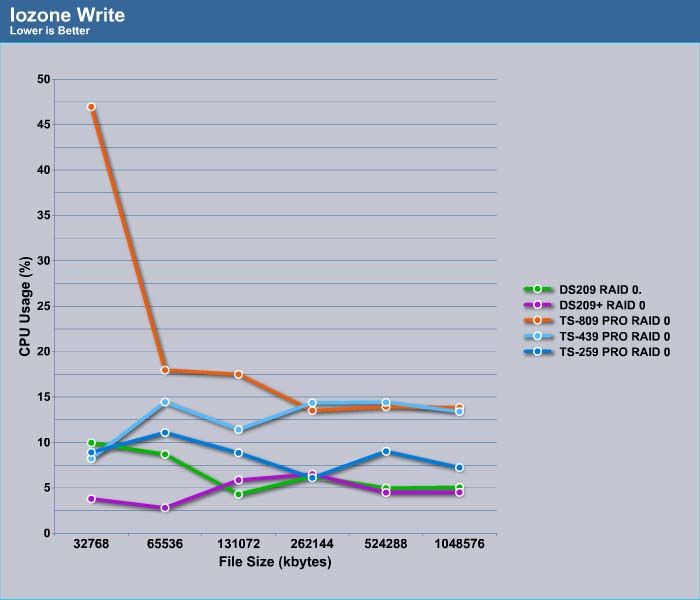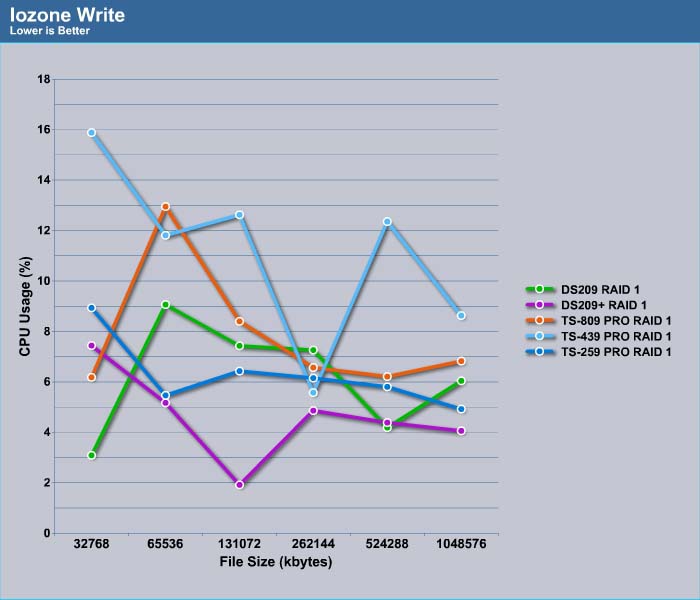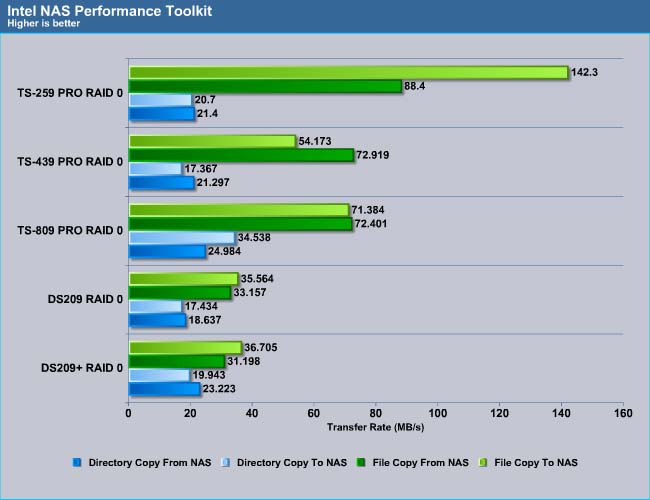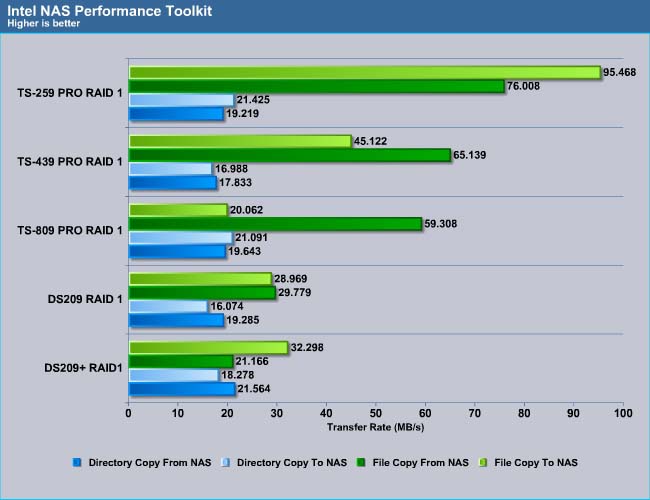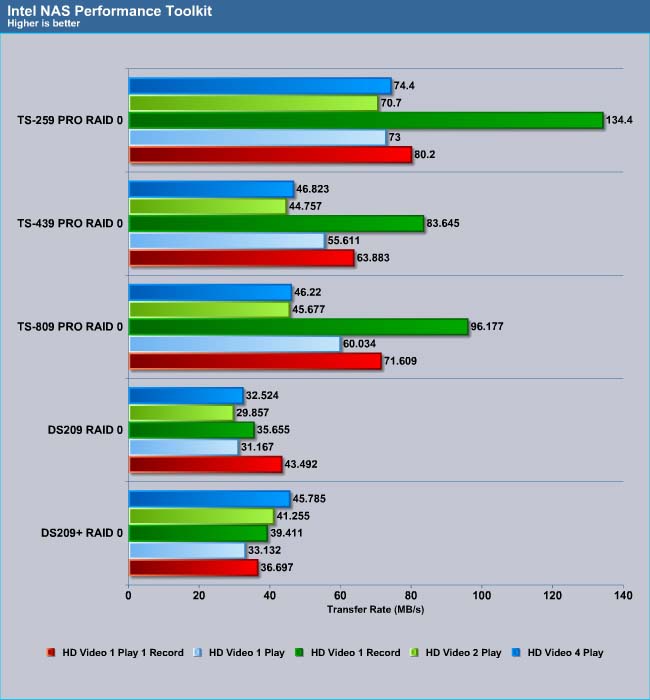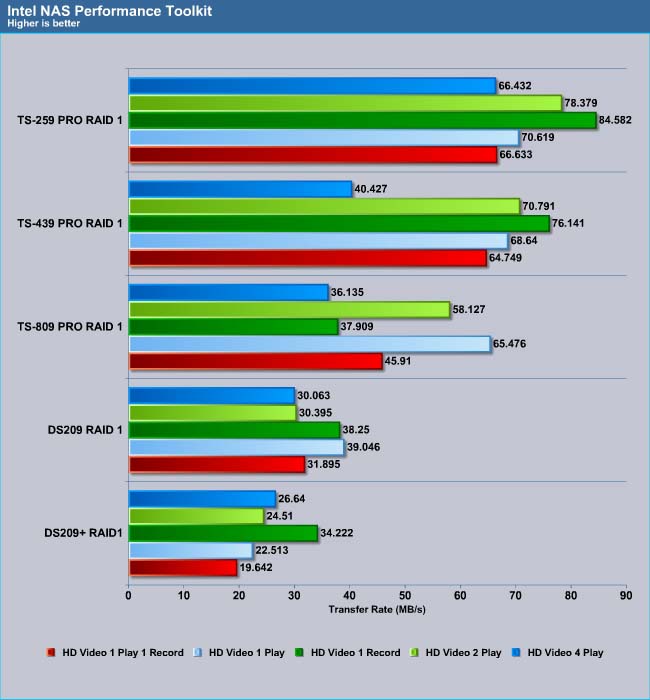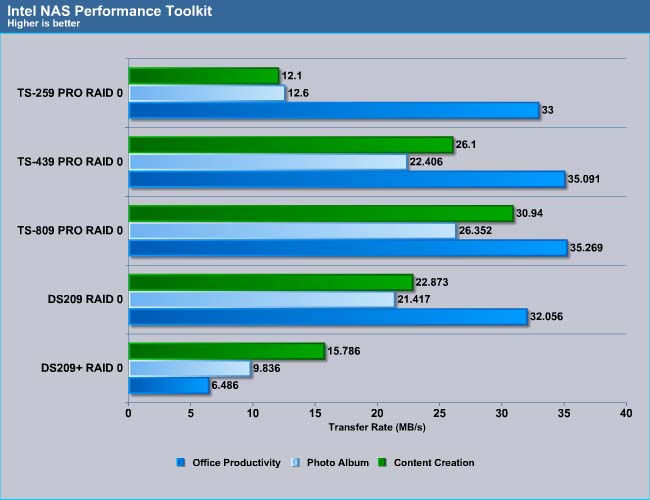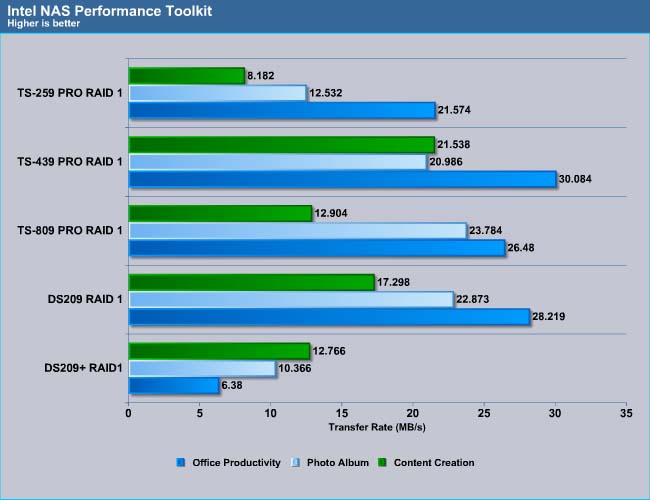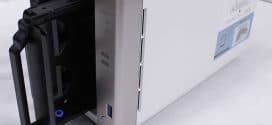The QNAP TS-259 Pro is one of the best NAS we have tested, due to its use of the Intel Atom processor. The low power consumption, great features, and excellent performance make this one of the best 2-bay NAS units on the market.
INTRODUCTION
Intel’s Atom platform has had great success in the netbook market, especially due to its low power consumption. As a result, manufacturers started introducing the Atom processor into different computer hardwares such as Tablet PCs, HTPCs, and NetTops. Now the Atom has moved into the Network Attached Storage (NAS) market.
SoC are often used in budget and mainstream NAS products due to their lower power consumption, but they are not as powerful as a desktop processor based NAS. High-end NAS products like the QNAP TS 809 Pro will often use desktop processors that emphasize performance over power consumption. The Atom processor seems to be a perfect marriage of the two with its combination of high performance (due to its x86 design) and low power consumption.
QNAP is one of the manufacturers that seized onto the Atom processor based NAS market. Their latest TSx59 line of NAS products, all based on Atom processor, comes in a wide range of storage capacities. The main differences between the different TSx59 products is the amount of power they consume and the numbers of drives they support (the x indicates the number of drives a given NAS can use).
The TS-259 Pro is a two-bay NAS targeted towards home or small business users. In this review, we’ll examine how the new Atom based NAS compares against older SoC based NAS products.
QNAP TS-259 PRO
The QNAP TS-259 Pro is a 2 bay NAS. It uses the Intel Atom Dual Core D510 1.66GHz processor. This is a third generation Atom processor from Intel based on the Pinetrail platform. The unit includes 1GB DDR2 RAM, and 512MB DOM flash memory. The RAID controller on the NAS is handled by the ICH8R Southbridge.
The NAS case is constructed with metal and plastic. The exterior is made with plastic casing despite its metallic appearance. It is probably only a little bigger than some dual-bay external storage enclosures, and it has a small footprint. Although a metal casing would have been preferrable due to lower HDD temperatures, the low power consumption of the Atom processor compensates for it, and the small amount of heat emitted is nothing that the single exhaust fan on the back cannot handle.
Front
Following the trend of older QNAP NAS products, the front of the TS -259 Pro has a very simple and user-friendly interface. The old square buttons have been replaced with two round buttons, one for power and one for One Touch Copy. There is a single USB connector on the front. Given this is a budget unit, it is no surprise that the NAS does not come with an LCD display.
The TS-259 Pro uses the same removable hard drive tray as its predecessors. The tray is a well-constructed metal body frame, with a plastic front. Due to the same form factor and shape, these trays are interchangeable between NAS units. If users ever need to move to a higher capacity NAS unit, they can simply remove the tray from the TS-259 Pro and insert it into the unit of their choice. The larger NAS will pick up the hard drives with the data intact, avoiding users the tedium of rebuilding data. In addition, the tray also supports 2.5” drives so if you are planning ot use SSDs on the NAS, there is no need for an adapter.
Back
The back of the NAS has two GBit Ethernet ports, two eSATA ports, and four USB 2.0 ports. Most NAS units do not come with this many USB 2.0 ports, so the high number of ports is a positive factor. Despite this, we would have preferred that the system use USB 3.0 ports, especially as they are quickly advancing in the market. The NAS also comes with a VGA port on the back.
The back of the unit has a 70mm fan for ventilation. In addition, the front and right sides of the NAS have ventilation holes pull cool air into the unit. The low power consumption Atom processor does not require much cooling so the small fan is more than enough keeping the hard drives and the internal components cool. Additionally, the low heat emissions of this unit mean the fan works less and runs quietly, allowing users to retain an ambient environment.
QNAP includes two Ethernet cable, the power adapter, a bag of screws, the hard disk lock, driver disc, and a quick installation guide.
FEATURES AND SOFTWARE
The TS-259 Pro supports extensive an list of features. It supports iSCSI service and is compatible with VMware vSphere 4 (ESX 4.0 and above). It also supports multiple LUNs (Logical Unit Numbers) and Virtual Disk Drives. It works on a wide range of platforms including Windows, Mac, Linux, and UNIX. Users can also share files across these platforms.
The NAS supports applications such as file server, FTP server, printer server, web server, and Windows AD. Both IPv6 and IPv4 dual-stack are supported, as well as Wake on LAN, scheduled power on/off, and HDD S.M.A.R.T.
For security purposes, the NAS supports AES 256-bit Volume-based Data Encryption. One unique characteristic of this NAS is that the DOM has a dual operating system built in such that if one OS fails, the backup OS can recover the system.
Setup and Software Interface.
Setting up the QNAP NAS is made easy using the QFinder (a Windows and Mac application) or the web interface. After installing two Western Digital 500GB hard drives to the NAS, we turned the NAS on and were able to setup the hard drives in less than 10 minutes.
Despite all of its great qualities, the power of a NAS unit is not contained in its ports or its external features. While the physical hardware often dictates its performance, the software can enhance user experience and its functionality. Most NAS systems are similar in hardware, but the quality of the software is what allows the truly excellent ones to stand out.
The main screen of the QNAP web interface is a palette of icons that mimic Apple Coverflow. The main user interface, based on Ajax (a type of JavaScript), consists of a left panel with a folder tree. The right side is where users can access folders and settings in more detail. The interface is easy to navigate but the large number of folders and setings can be a bit daunting for a first time user.
QNAP recently released a v3.3 firmware that brings a few new features, making the NAS even more suitable for home users. With the explosion of digital contents, the NAS has trickled down to the home user environment where it functions as a centralized file server. The firmware v3.3 update adds much needed support for HFS+ storage devices, in addition to the already supported EXT 3, EXT 4, FAT32, and NTFS file systems. HFS+ is the native file system for Mac OS X. This addition is a welcome change, as it makes the NAS accessible for the growing demographic of Mac users. In addition, it also works with Apple Time Machine Backup Management.
Another great feature is the Search function. Users can quickly find a function instead of digging through a myriad of folders. Unfotunately, it is a tad laggy. It takes 5 to 10 seconds for the option to display the result to a search query. Sometimes the system will appear to hang and only the first letter is entered as the NAS tries to search the entry. The Search function also appears incomplete. For example, when we searched for “forum” or “support”, no result appeared.
One good feature of the search option is that users do not need to type the exact name of the function. For example when we searched “video” it pulled up UPnP Media Server; however, a search for “music” does not pull up the same result. All in all, it is a good idea, but the execution needs improvement in order for the feature to be fully functional.
QMobile
The NAS also allows users to pull music off the system through their cellphones. The QMobile apps, which can be downloaded from the mobile device’s store, allow users to pull their music files off the NAS remotely. There is a beta version still under development for Android based phones; this is a great benefit to users, as the volume of Android users is growing fast.
To use this feature, users need to enable the QMobile option under the Network Service Discovery and the Multimedia Station on their NAS. The multimedia station is password protected. Users can set their own password. It is not recommended to set this password as the same as the main admin password.
To access the files from a mobile device, users need to install the QMobile software. The software interface is quite simple and fairly easy to use, and has many convenient and great features. For example, users can access their music collection by logging into the NAS and play songs remotely. QMobile actually caches the music to the iPod so that the music can be played offline. A maximum of 1,000 songs can be cached to a device.
We played with the QMobile feature using an iPod. It took 10 to 15 seconds after a file started playing for it to be cached to the iPod. Unfortunately, the software does not allow users to select multiple files or whole folders to be downloaded or cached. Users must play songs one at a time for roughly 15 seconds each for the song to be cahced to their mobile device. Another shortfall of the software is that it does not allow users to manage their collection by deleting songs.
Overall, QMobile has great potential, and could be a great upgrade given the right improvements. We hope QNAP will continue to develop it, and maybe even expand it so users can use it to remotely access any sort of file.
Multimedia Station 2
The new firmware also contains an updated Multimedia Station 2. This revamped media station is written with Adobe Flex/Flash technology, giving it a more streamlined and futuristic appearance. It is also much easier to navigate the new interface.
With social networking gaining popularity, QNAP is trying to integrate such features into their NAS for home users: the new Multimedia Station 2 lets users send photos to email or publish them directly to the mainstream social networking sites such as Twitter or Facebook.
Users can also use the Cooliris plug-in, an open source digital content organizer, to give their multimedia station a 3D look
The latest firmware also includes an update for the shared UPS (uninterrupted power supply). As the NAS is a contains a large amount of valuable data, a backup power source is essential, so that in the event of a power failure, data will remain secure and intact. While almost all NAS products support UPS, QNAP’s latest firmware allows a single UPS to be used for multiple NAS products if they are on the same physical network.
The new firmware also comes with an ISO mounting feature. No longer must users transfer or encode your movie collections into media files. They can now simply convert DVDs and CDs into ISO image files and save them to the NAS. These ISO images can then be mounted on a virtual drive to gain access to the files within. The benefit of the ISO mount is the faster transfer rate offered by the NAS compared: since the ISO file is in the hard drive, it is faster than an optical drive reading data off a disc.
All these new features make the QNAP TS-259 a very user-friendly device. We will now test the performance of this unit, and compare it to other NAS products.
TEST CONFIGURATION
| Test Rig | |
| Case Type | None |
| CPU | Intel Core i7 920 |
| Motherboard | Gigabyte EX58-UD4P (BIOS F8) |
| RAM | Kingston HyperX KHX12800D3LLK3/6GX |
| CPU Cooler | Prolimatech Megahalems |
| Hard Drives | Seagate Barracuda 7200.11 1.5TB |
| Optical | Nec DVD-RW ND-3520AW |
| GPU Tested | Asus ENGTX260 Matrix |
| Testing PSU | Cooler Master UCP 900W |
| Legacy | Floppy |
| Mouse | Logitech G7 |
| Keyboard | Logitech Media Keyboard Elite |
We used Western Digital Green Power WD500ABPS (500GB/5400~7200RPM/16M) drives. For RAID0 and RAID1 configurations, we installed two drives. For RAID5 RAID6 configurations, we paired two Western Digital Green Power WD500ABPS with two Samsung HD753LJ (750GB/7200RPM/32M) drives. We conducted the test with Iozone 3.282 (www.iozone.org). The test was done using the Gigabit network through a D-Link DIR-825 router. The test was done with jumbo frame disabled. The following command was used to test the transfer speed:
iozone -Rab -i 0 -i 1 -+u -f -q 64k -n 32M -g 1G –z
This command tests the record size of 64Kbytes and transferred file sizes of 32, 64, 128, 512 and 1024 Mbytes.
We are starting off with an overview of what the test represents. The Iozone Write Test tests how the system performs when it is writing a new file. The Rewrite tests measures performance when it is writing a file that already exists. The Rewrite performance is expected to be better than Write performance, as rewriting the file with existing meta data is less demanding than writing a fresh file. The Read tests measure performance while reading an existing file while the Reread test measures performance while reading a file that was recently read. Similar to the Write and Rewrite tests, the results of the Reread test are expected to be better than the results of the Read test as the file for the Reread test has already been cached.
In addition to Iozone, we will also test the unit with the Intel NAS Performance Toolkit to measure the system’s throughput in various working environments.
IOZONE
Read–RAID 0 and 1
The TS-259 Pro performed excellently in our Iozone Read test. Iozone simulates multiple user access, and the latest Intel Atom based NAS shows a very promising read performance. It beats out other NAS systems we tested. The TS-259 Pro stays consistent at around 90 MB/sec across different file sizes.
The read performance under RAID 1 for TS-259 Pro shows the unit performs quite well in mid-size files but is lacking when it comes to small and large file size transfers. As we can see, the TS-809 Pro shows the best overall performance due to its use of a desktop processor, which allows it to retain steady performance across different file sizes. Nonetheless, the TS-259 Pro shows a very respectable performance, and is a great candidate for home use.
Reread–RAID 0 and 1
The rearead shows the TS-259 Pro takes the lead over all other NAS products, with a throughput of over 2 million KB/sec more than other NAS systems.
CPU Usage
TS-259 Pro uses the CPU slightly more for the read.
The reread CPU usage reaches 100%.
IOZONE
Write–RAID 0 AND 1
The write performance for the TS-259 Pro is just as impressive as the read. Despite the precipitous fall in write performance of files larger than 256 MB, the unit still significantly outperforms other NAS products.
Rewrite
The rewrite performance for the TS-259 Pro is all over the place. However, users should take the reread and rewrite performance results with a grain of salt, as they are testing files that have been recently accessed and are most likely cached in the system’s memory. This performance disparity probably will not make any measurable impact on a home user’s experience.
CPU Usage
The CPU usage for the write is a little higher than other 2-bay NAS but is still manageable at under 15%. It is worth noting that the TS-259 Pro uses significantly less CPU than the TS-809 and TS-439 units, especially considering the performance disparity between these models.
The rewrite CPU usage is relatively low for the TS-259 Pro.
INTEL NAS PERFORMANCE TOOL KIT
File and Directory Copy
RAID 0
In our first batch of Intel NAS Performance Tool Kit tests, we see that the TS-259 Pro excels in the File Copy To and File Copy From NAS tests. In the File Copy To NAS, the TS-259 Pro yields an impressive 142.3 MB/s, doubling what we saw with other NAS products. At 88.4 MB/s, its File Copy From NAS also takes the lead over the TS-809 Pro.
The Directory Copy To NAS and Directory Copy From NAS for the TS-259 Pro are comparable to other two bay NAS we have tested. The Synology DS-209+ performs slightly better for the Directory Copy From NAS test, but the TS-259 Pro takes the lead in the Directory Copy To NAS.
RAID 1
The same result can be seen under RAID 1 configuration. Again, the TS-259 Pro takes two leaps ahead with the File Transfers To and From the NAS. Its Directory Copy To and From NAS also hold their own with other products we have tested.
HD Contents Recording and Playback
The TS-259 Pro excels in every single HD content recording and playback test. The impressive write speed shows that the TS-259 Pro has a clear advantage over other two bay NAS products when it comes to recording HD content, and the TS-259 even beats four and eight bay NAS systems. We can also see that the TS-259 Pro showed very good performance as the number of the HD Video Play increased. Whether we played back one, two or four HD contents, the TS-259 Pro stayed consistent at around 70 MB/s, an impressive speed as other NAS often drop drastically in speed for the HD Video 4 Play test.
The TS-259 Pro shows an exceptional result in our HD content tests under RAID 1 configuration. Here the NAS shows a slight decrease in the performance as we increase the number of HD Video Play but it is still able to maintain a 94% transfer rate at 66 MB/s.
Office Productivity, Photo Album, and Content Creation
For all its successes with file transfer, directory copy, and HD content, the TS-259 Pro falls surprisingly short in the Content Creation and Photo Album tests. The Content Creation test simulates creation of files on the NAS with a heavy emphasis on the write operation. This is a test reveals a weak spot on the TS-259 Pro. Contrasted to the File Copy to NAS, the Content Creation has a test pattern focusing on 95% file writing with approximately 40% sequential data of various sizes up to 64 kB. We can see that the Atom processor does have its drawbacks: the TS-259 Pro is only able to yield 12 MB/s while other (non-Atom based) NAS products are capable of at least 15 MB/s. Both Synology products come in significantly ahead of the TS-259 Pro.
The Photo Album test focuses on the read operation of different file sizes with 80% sequential data. Here again, the Atom based NAS shows its weakness.
Similar to what we saw with RAID 0, the TS-259 Pro is severely lacking in both the Content Creation and Photo Album tests under RAID 1.
CONCLUSION
QNAP has designed the perfect NAS for home users. The Atom-based TS-259 Pro offers excellent performance. The unit excels in many areas such as multi-user environment, HD content transfer, and file copy. While the unit does not always beat other NAS products, whenever it excels, it does so by a wide margin.
Not only does QNAP TS-259 Pro offer excellent performance, its features such as QMobile, Multimedia Server 2, and multiple platform support are designed to satisfy the needs of home users. It runs quietly, with low temperatures, and its low power consumption is ideal for use in a home environment. All in all, we believe that this is the best 2-bay NAS on the market right now. The only detriment to the TS-259 Pro is its price. The unit is currently selling at Newegg for $559.31, which is fairly expensive for a 2-bay NAS, especially one designed for home use. Many 2-bay NAS can be purchased at around $300, but lack the same performance, features, and constant firmware updates that users can get from QNAP.
Our recommendation is that anyone who is looking for a good 2-bay NAS, definitely check out the TS-259 Pro. We think the extra features and performance definitely worth spending a bit extra cash.
| OUR VERDICT: QNAP TS-439 PRO |
||||||||||||||||||
|
||||||||||||||||||
| Summary: We were quite impressed by QNAP TS-259 Pro’s performance. Considering its features and performance, it is probably the best 2-bay NAS that users can buy. For this, we are proud to give our coveted Golden Bear Award to the TS-259 Pro. |
 Bjorn3D.com Bjorn3d.com – Satisfying Your Daily Tech Cravings Since 1996
Bjorn3D.com Bjorn3d.com – Satisfying Your Daily Tech Cravings Since 1996
